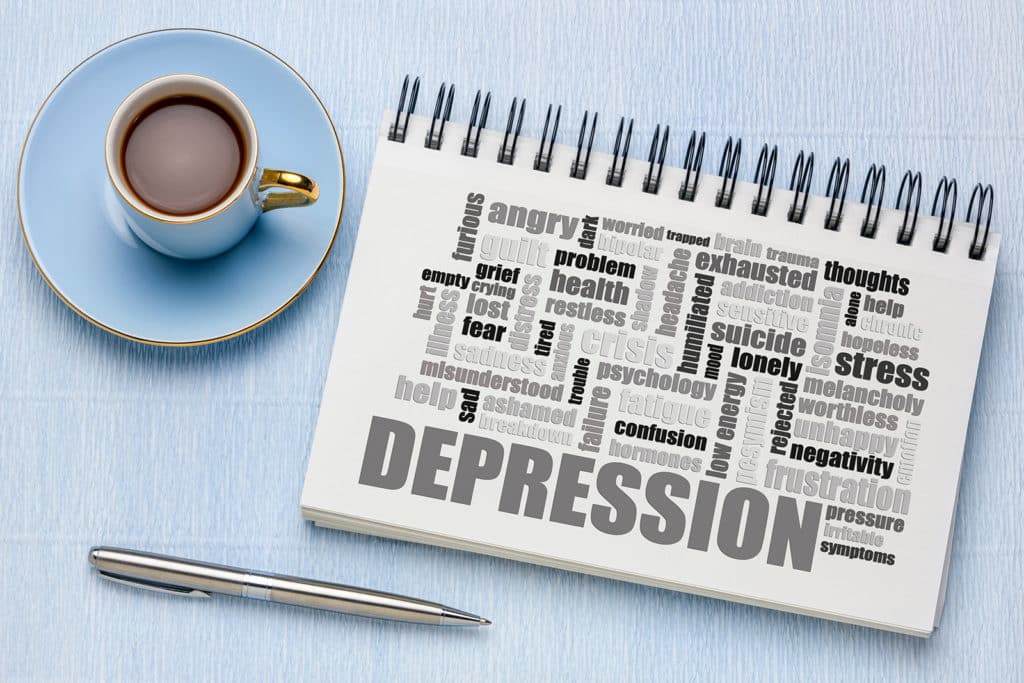Depression and manic depression may sound similar, but they are two very different conditions. Despite their commonalities, it’s important to understand the distinction between the conditions. What’s the difference between depression and manic depression?
What is Depression?
Everyone feels sad from time to time, but depression is more than feeling sad. Depression is a serious and sometimes progressive mental disorder. It’s the most common mental disorder in the United States. About 21 million adults in the United States (8.4% of the population) experienced a major depressive episode in the last year.1
A major depressive episode occurs when someone experiences low mood, loss of interest in activities, poor self-worth, and problems with energy, sleep, or eating for at least two weeks. Some people experience short-term depression following a specific event, called situational depression. Others experience depression that lasts for months or years, called major depressive disorder.
What is Manic Depression?
Manic depression is an older term used to describe bipolar disorder. It is a serious mental illness consisting of cycling periods of mania and depression. There are three types of bipolar disorder:
- Bipolar I: Manic episodes lasting at least seven days, and depressive episodes lasting at least two weeks
- Bipolar II: Episodes of hypomania that do not meet the criteria for full manic episodes, followed by depressive episodes
- Cyclothymic Disorder: Periods of hypomania and depression lasting at least two years that do not meet the criteria for a full hypomanic or depressive episode
Bipolar disorder, or manic depression, is a serious mental illness that requires intensive treatment and ongoing care.2 Sometimes, people require hospitalization when their symptoms are severe enough. Left untreated, individuals with the condition may harm themselves during intense episodes.
Dive deeper into the differences between Bipolar 1 and Bipolar II.
How Depression and Manic Depression Are Different
The primary difference between depression and manic depression is the presence of cycling episodes. People with depressive disorders do not experience manic or hypomanic episodes; they only experience depression.
However, people with manic depression, or bipolar disorder, cycle between manic symptoms and depressive symptoms. Their depressive episodes are always accompanied by an eventual period of mania. During these episodes, they feel “up,” energetic, elated, impulsive, and often irritable.
Manic episodes are particularly dangerous because they affect judgment and impulse control. Individuals with manic depression often engage in risky behaviors when experiencing mania. This includes excessive eating or drinking, massive spending sprees, gambling, engaging in unprotected sex, or taking drugs or drinking heavily.
Treating Depression and Manic Depression
Despite the difference between depression and manic depression, both conditions are treatable. While manic depression and some cases of depression are lifelong, you can learn to manage them with the proper intervention. Dedicated mental health treatment programs offer help and hope to those struggling.
Pasadena Villa is a psychiatric treatment network providing care to anyone living with mental illness such as depression. We outline a path to sustained recovery through a combination of psychotherapy, medication, and life skills. Whether you’ve been to treatment before or it’s your first time seeking help, Pasadena Villa is here for you.
To learn more about our programs and find the right fit for you, please give us a call at (407) 565-8942. You never need to feel alone in your struggles again; we’ll be right alongside you every step of the way.
References
- National Institute of Mental Health. (2022). Major Depression.
- National Institute of Mental Health. (2022). Bipolar Disorder.





